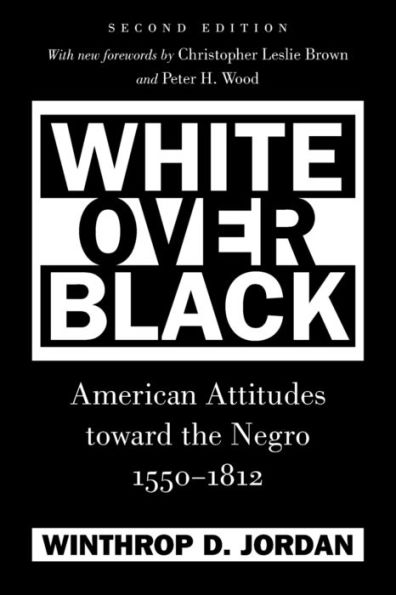Table of Contents
Foreword Christopher Leslie Brown vii
Foreword Peter H. Wood xvii
Preface xxvii
Acknowledgments xxxv
Part 1 Genesis 1550-1700
I First Impressions: Initial English Confrontation with Africans 3
1 The Blackness Without 4
2 The Causes of Complexion 11
3 Defective Religion 20
4 Savage Behavior 24
5 The Apes of Africa 28
6 Libidinous Men 32
7 The Blackness Within 40
II Unthinking Decision: Enslavement of Negroes in America to 1700 44
1 The Necessities of a New World 45
2 Freedom and Bondage in the English Tradition 48
3 The Concept of Slavery 52
4 The Practices of Portingals and Spanyards 56
5 Enslavement: The West Indies 63
6 Enslavement: New England 66
7 Enslavement: Virginia and Maryland 71
8 Enslavement: New York and the Carolinas 83
9 The Un-English: Scots, Irish, and Indians 85
10 Racial Slavery: From Reasons to Rationale 91
Part 2 Provincial Decades 1700-1755
III Anxious Oppressors: Freedom and Control in a Slave Society 101
1 Demographic Configurations in the Colonies 102
2 Slavery and the Senses of the Laws 103
3 Slave Rebelliousness and White Mastery 110
4 Free Negroes and Fears of Freedom 122
5 Racial Slavery in a Free Society 128
IV Fruits of Passion: The Dynamics of Interracial Sex 136
1 Regional Styles in Racial Intermixture 137
2 Masculine and Feminine Modes in Carolina and America 144
3 Negro Sexuality and Slave Insurrection 150
4 Dismemberment, Physiology, and Sexual Perceptions 154
5 The Secularization of Reproduction 164
6 Mulatto Offspring in a Biracial Society 167
V The Souls of Men: The Negro's Spiritual Nature 179
1 Christian Principles and the Failure of Conversion 180
2 The Question of Negro Capacity 187
3 Spiritual Equality and Temporal Subordination 190
4 The Thin Edge of Antislavery 193
5 Inclusion and Exclusion in the Protestant Churches 198
6 Religious Revival and the Impact of Conversion 212
VI The Bodies of Men: The Negro's Physical Nature 216
1 Confusion, Order, and Hierarchy 217
2 Negroes, Apes, and Beasts 228
3 Rational Science and Irrational Logic 234
4 Indians, Africans, and the Complexion of Man 239
5 The Valuation of Color 252
6 Negroes Under the Skin 259
Part 3 The Revolutionary Era 1755-1783
VII Self-Scrutiny in the Revolutionary Era 269
1 Quaker Conscience and Consciousness 271
2 The Discovery of Prejudice 276
3 Assertions of Sameness 281
4 Environmentalism and Revolutionary Ideology 287
5 The Secularization of Equality 294
6 The Proslavery Case for Negro Inferiority 304
7 The Revolution as Turning Point 308
Part 4 Society and Thought 1783-1812
VIII The Imperatives of Economic Interest and National Identity 315
1 The Economics of Slavery 316
2 Union and Sectionalism 321
3 A National Forum for Debate 325
4 Nationhood and Identity 331
5 Non-English Englishmen 335
IX The Limitations of Antislavery 342
1 The Pattern of Antislavery 343
2 The Failings of Revolutionary Ideology 349
3 The Quaker View Beyond Emancipation 356
4 Religious Equalitarianism 361
5 Humanitarianism and Sentimentality 365
6 The Success and Failure of Antislavery 372
X The Cancer of Revolution 375
1 St. Domingo 375
2 Non-Importation of Rebellion 380
3 The Contagion of Liberty 386
4 Slave Disobedience in America 391
5 The Impact of Negro Revolt 399
XI The Resulting Pattern of Separation 403
1 The Hardening of Slavery 403
2 Restraint of Free Negroes 406
3 New Walls of Separation 414
4 Negro Churches 422
Part 5 Thought and Society 1783-1812
XII Thomas Jefferson: Self and Society 429
1 Jefferson: The Tyranny of Slavery 430
2 Jefferson: The Assertion of Negro Inferiority 435
3 The Issue of Intellect 440
4 The Acclaim of Talented Negroes 445
5 Jefferson: Passionate Realities 457
6 Jefferson: White Women and Black 461
7 Interracial Sex: The Individual and His Society 469
8 Jefferson: A Dichotomous View of Triracial America 475
XIII The Negro Bound by the Chain of Being 482
1 Linnaean Categories and the Chain of Being 483
2 Two Modes of Equality 486
3 The Hierarchies of Men 491
4 Anatomical Investigations 497
5 Unlinking and Linking the Chain 502
6 Faithful Philosophy in Defense of Human Unity 506
7 The Study of Man in the Republic 509
XIV Erasing Nature's Stamp of Color 512
1 Nature's Blackball 512
2 The Effects of Climate and Civilization 513
3 The Disease of Color 517
4 White Negroes 521
5 The Logic of Blackness and Inner Similarity 525
6 The Winds of Change 530
7 An End to Environmentalism 533
8 Persistent Themes 538
XV Toward a White Man's Country 542
1 Emancipation and Intermixture 542
2 The Beginning of Colonization 546
3 The Virginia Program 551
4 Insurrection and Expatriation in Virginia 560
5 The Meaning of Negro Removal 565
Epilogue
XVI Exodus 573
Note on the Concept of Race 583
Essay on Sources 586
Select List of Full Titles 610
Map: Percentage of Negroes in Total Non-Aboriginal Population, 1700 615
Index 617



